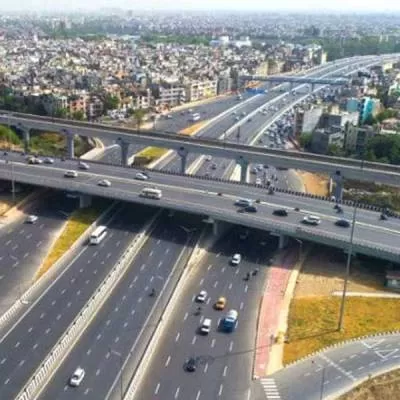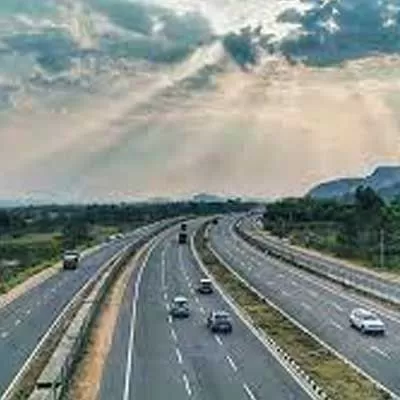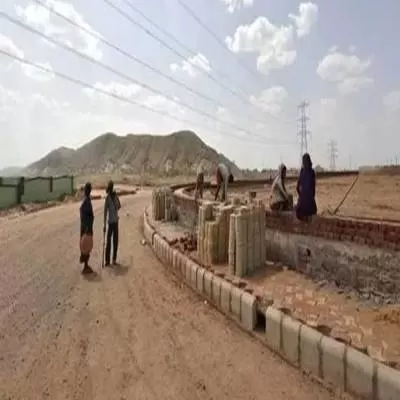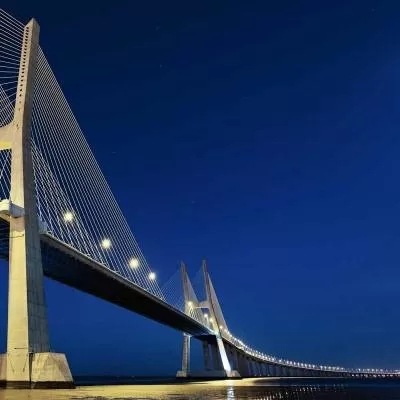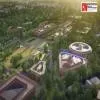- Home
- Infrastructure Transport
- ROADS & HIGHWAYS
- Roads over Hills
Roads over Hills
A civil engineer has the power to alter the geography of a nation," believes Kuldip Kumar Shrivastava, Chief Engineer, Uttarakhan Rural Road Development Agency. Motivated by his father to opt for civil engineering, Shrivastava has been involved for over 28 years with several reputed organisations like the (Public Works Department PWD) and URRDA. Being associated with the latter since 2010 has given him the leverage to handle many landmark projects. He shares his many years of experience and an industry take with CW...
Role in development
National Rural Road Development Agency (NRRDA) is the coordinating agency for the Pradhan Mantri Gram Sadak Yojna (PMGSY) at the central level. The same role is played by other agencies at the state level. In Uttarakhand parti-cularly, it is the PWD that is responsible for implementing the various initiatives of the road sector. My role with URRDA involves coordinating between NRRDA, the state PWD and the government's Rural Development Department. I also monitor implementation of their schemes to enhance rural road connectivity. This involves project selection, clearing the Detailed Project Report (DPR), submitting it to the government and seeing to its execution through the project implementation unit; arranging training programmes; implementing quality mechanisms; and supervision of quality and maintenance, etc.
Techno evolution
Instead of urban or rural, roads can be classified as either hilly or plain. Construction on plain roads in India is easier as we have the required expertise and machinery for it. However, for hilly roads, not only do we not have the required infrastructure, but in many cases contractors also avoid undertaking such projects due to the challenges involved.
Here, the main challenge lies in the excavation of mountains and hills for the construction of the route. Around 10 years ago, this was executed manually. However, with the introduction of PMGSY, contractors now use sophisticated machines like dozers. Additionally, we have developed the concept of pro-environmental construction in the last two to three years, besides adopting slope protection techniques from gabions (rocks, concrete, sand or soil enclosed in wire baskets to stabilise slopes) and submitting a few detailed project reports with the provision of bio-engineering.
Technology for road construction has changed drastically over the years. New earthmoving machines, especially for the construction of national highways, have been introduced along with new geosynthetics and coir synthetic mat-erials and tile stabilising chemicals like RBI-Grade 81. We also normally use machines from renowned brands like JCB and Tata.
Cost factor
The main materials used for road construction in hilly terrains include stone and soil. Coir textiles and geosynthetics are slightly costlier than other materials. They amount to about Rs 300 per sq m; or in terms of cubic metre, including the cost of stone, labour and Gabions, the cost is about Rs 1,200-1,400 per cu m. Cement machinery incurs about Rs 2,000-2,400 per cu m. In PMGSY, the procurement of these materials is arranged by the contractors and factories situated in the vicinity.
Overcoming challenges
One of my most challenging projects as an assistant engineer involved widening of a 14 km track from Gauripur to Kedarnath. Sanctioned and commissioned in 1989 at an investment of Rs 3.5 crore, this project was executed smoothly up to 1995. Thereafter, it was brought to a halt due to adverse climatic conditions and damaged concreting. Escalating costs added to woes, and we had to opt for a technology that suited our tight budget. To overcome this, I offered a tax-saving solution to the Central Government that involved the use of local stone and concrete for the project. This solution was accepted, and I completed the project in 1999 for a nominal sum of Rs 3 crore. The project was also challenging due to the high altitudes of both the locations and the presence of glaciers.
A helping hand
Development of infrastructure in Uttarakhand accelerated after the formation of the state. We have, till date, constructed around 10,000 km of roads including those under PWD and PMGSY. We have also been awarded contracts for 5,700 km to 7,500 km since the inception of PMGSY. Out of these, 4,051 km amounting to Rs 100 crore have already being constructed; while we are currently preparing DPRs for the construction of a further 6,500 km. The government helps us by arranging for the required land and funds.
Nagging issues
There are quite a few reasons for the poor condition of roads in our country. Contractors generally do not maintain the project specifications as required. Lack of knowledge, supervision and non-cooperation of civil society also add to the woes
resulting in the worsening conditions of roads.
The most prominent challenge the industry faces today is that of price esc-alation, especially of diesel, petrol and cement. Contractors usually make provisions for this escalation in their agreements. But, in projects like PMGSY, particularly in Uttarakhand and Uttar Pradesh, such provisions cannot be made. If there is a price rise, it affects the contractor directly as he has to bear these additional costs. This is also the plight of a builder. Other prominent challenges that the industry faces today is that of land acquisition and environment clearances.
Training all the way
There are two modes of training in civil engineering – institutional and practical training. Most masons and labourers are trained for a day or two before they work on-site. At URRDA, we train, supervise and certify such workers for appropriate jobs.
Engineers should be considered an important part of the society. However, due to the current political system, we work under multiple pressures, and freedom is curbed. This issue needs to be addressed positively in order to gear engineers to perform to the best of their ability.
Challenging projects
Project: Widening and improving the foot track from Gaurikund to Kedarnath
Period: May 1996 to October 1998
Cost: Rs 3.5 crore
Client: Department of Tourism, Uttar Pradesh
Project management consultant: Uttar Pradesh PWD
Background: Located in the valley between Gaurikund (altitude 1,950 m) and Kedarnath (altitude 3,550 m), this track is surrounded by glaciers and avalanche-risk areas. The initial width of the track was 1.80 m to 2.8 m. In order to accommodate the increasing number of pilgrims, it was necessary to widen and improve the track.
Challenges: The project was alloted Rs 3.5 crore of investment in FY1989-90, with work worth Rs 50 lakh being executed up to the FY 1992-93. The track comprised three streams that turned into glaciers in winter; neccesiating foot bridges. As the project could only be executed from May to October, pavement surface of local material instead of concrete, was used. This pavement is not only frost-resistant, but also provides a non-skid surface to ponies and is easily maintainable.
Success: The project was completed in FY1997-98 with the provision of folding bridges with well-designed abutments and natural stone paving grouted with appropriate cement mortar within the sanctioned cost.
Project: Construction of A two-lane 190 m span steel girder bridge over the river Ganga near Rishikesh.
Period: 2008-2010
Cost: Rs 9.7 crore
Client: Government of Uttarakhand
Project Management Consultant: PWD Uttarakhand
Major Contractors: Madhava Hi-Tech, Hyderabad and Hillways Engineering Co, Rishikesh
Background: This project was initially awarded to Madhava Hi-Tech, Hyderabad, in 2007. After having
completed 25 per cent, the work was halted due to internal company problems. Despite continuous pressure from the government, the work could not be restarted.
Challenges: To recommence work on the project, it was necessary to engage another contractor without getting into litigations and avoiding any stay order from the court. To achieve this, Hillways Engineering Co, Rishikesh was engaged and the project was completed on time.
Track record: KK Shrivastava
Education: B Tech (Civil) from the Harcourt Butler Technological Institute, Kanpur
Career:
- 1981-84: Assistant Engineer in Samaj Kalyan Nirman Nigam, Uttar Pradesh
- 1984-2002: Assistant Engineer in PWD, Uttar Pradesh/Uttarakhand
- 2002-2007: Executive Engineer in PWD, Uttarakhand
- 2007-2010: Superintending Engineer in PWD, Uttarakhand
- 2010-till date: Chief Engineer in URRDA
- Construction of 56 km stretch of Buddha Tourist Circuit from Naugarh to Barhni in the Siddharthnagar district of Uttar Pradesh in the year 1993-95.
- Widening and improvement of the 14 km Gauri Kund-Kedarnath (altitude between 2,200 m to 3,150 m) in the year 1997-99.
- Construction of community hall and hospital building at Kedarnath (altitude 3,150 m) in the year 1998-2000.
- Construction of 95 m span steel girder single lane bridge over river Madmaheshwar Ganga in district Rudraprayag in the year 1999-2001.
- Widening and improvement of 24 km Srinagar to Pauri Motor Road in the year 2002-04.
- Widening and strengthening of Pauri to Devprayag Motor Road with 48 km of bituminous macadem (BM) and semi-dense bituminous concrete (SDBC) in 2007-09.
- Construction of 190 m (40+110+40) span two-lane steel girder motor road bridge at Garur-Chatti Rishikesh in the year 2008-09.
- Improvement of 13.40 km Joshimath to Auli Motor Road with BM and SDBC in the year 2009-10.
- Improvement of 20 km Govindghat to Valley of Flowers-HemKunt foot track in the year 2009-10.
Next in a series of interviews with prominent civil engineers, Shubhangi Bidwe talks to KK Shrivastava, Chief Engineer, Uttarakhand Rural Road Development Agency (URRDA).A civil engineer has the power to alter the geography of a nation, believes Kuldip Kumar Shrivastava, Chief Engineer, Uttarakhan Rural Road Development Agency. Motivated by his father to opt for civil engineering, Shrivastava has been involved for over 28 years with several reputed organisations like the (Public Works Department PWD) and URRDA. Being associated with the latter since 2010 has given him the leverage to handle many landmark projects. He shares his many years of experience and an industry take with CW...Role in developmentNational Rural Road Development Agency (NRRDA) is the coordinating agency for the Pradhan Mantri Gram Sadak Yojna (PMGSY) at the central level. The same role is played by other agencies at the state level. In Uttarakhand parti-cularly, it is the PWD that is responsible for implementing the various initiatives of the road sector. My role with URRDA involves coordinating between NRRDA, the state PWD and the government's Rural Development Department. I also monitor implementation of their schemes to enhance rural road connectivity. This involves project selection, clearing the Detailed Project Report (DPR), submitting it to the government and seeing to its execution through the project implementation unit; arranging training programmes; implementing quality mechanisms; and supervision of quality and maintenance, etc.Techno evolutionInstead of urban or rural, roads can be classified as either hilly or plain. Construction on plain roads in India is easier as we have the required expertise and machinery for it. However, for hilly roads, not only do we not have the required infrastructure, but in many cases contractors also avoid undertaking such projects due to the challenges involved.Here, the main challenge lies in the excavation of mountains and hills for the construction of the route. Around 10 years ago, this was executed manually. However, with the introduction of PMGSY, contractors now use sophisticated machines like dozers. Additionally, we have developed the concept of pro-environmental construction in the last two to three years, besides adopting slope protection techniques from gabions (rocks, concrete, sand or soil enclosed in wire baskets to stabilise slopes) and submitting a few detailed project reports with the provision of bio-engineering.Technology for road construction has changed drastically over the years. New earthmoving machines, especially for the construction of national highways, have been introduced along with new geosynthetics and coir synthetic mat-erials and tile stabilising chemicals like RBI-Grade 81. We also normally use machines from renowned brands like JCB and Tata.Cost factorThe main materials used for road construction in hilly terrains include stone and soil. Coir textiles and geosynthetics are slightly costlier than other materials. They amount to about Rs 300 per sq m; or in terms of cubic metre, including the cost of stone, labour and Gabions, the cost is about Rs 1,200-1,400 per cu m. Cement machinery incurs about Rs 2,000-2,400 per cu m. In PMGSY, the procurement of these materials is arranged by the contractors and factories situated in the vicinity.Overcoming challengesOne of my most challenging projects as an assistant engineer involved widening of a 14 km track from Gauripur to Kedarnath. Sanctioned and commissioned in 1989 at an investment of Rs 3.5 crore, this project was executed smoothly up to 1995. Thereafter, it was brought to a halt due to adverse climatic conditions and damaged concreting. Escalating costs added to woes, and we had to opt for a technology that suited our tight budget. To overcome this, I offered a tax-saving solution to the Central Government that involved the use of local stone and concrete for the project. This solution was accepted, and I completed the project in 1999 for a nominal sum of Rs 3 crore. The project was also challenging due to the high altitudes of both the locations and the presence of glaciers.A helping handDevelopment of infrastructure in Uttarakhand accelerated after the formation of the state. We have, till date, constructed around 10,000 km of roads including those under PWD and PMGSY. We have also been awarded contracts for 5,700 km to 7,500 km since the inception of PMGSY. Out of these, 4,051 km amounting to Rs 100 crore have already being constructed; while we are currently preparing DPRs for the construction of a further 6,500 km. The government helps us by arranging for the required land and funds.Nagging issuesThere are quite a few reasons for the poor condition of roads in our country. Contractors generally do not maintain the project specifications as required. Lack of knowledge, supervision and non-cooperation of civil society also add to the woes resulting in the worsening conditions of roads.The most prominent challenge the industry faces today is that of price esc-alation, especially of diesel, petrol and cement. Contractors usually make provisions for this escalation in their agreements. But, in projects like PMGSY, particularly in Uttarakhand and Uttar Pradesh, such provisions cannot be made. If there is a price rise, it affects the contractor directly as he has to bear these additional costs. This is also the plight of a builder. Other prominent challenges that the industry faces today is that of land acquisition and environment clearances.Training all the wayThere are two modes of training in civil engineering – institutional and practical training. Most masons and labourers are trained for a day or two before they work on-site. At URRDA, we train, supervise and certify such workers for appropriate jobs.Engineers should be considered an important part of the society. However, due to the current political system, we work under multiple pressures, and freedom is curbed. This issue needs to be addressed positively in order to gear engineers to perform to the best of their ability.Challenging projectsProject: Widening and improving the foot track from Gaurikund to KedarnathPeriod: May 1996 to October 1998Cost: Rs 3.5 croreClient: Department of Tourism, Uttar PradeshProject management consultant: Uttar Pradesh PWDBackground: Located in the valley between Gaurikund (altitude 1,950 m) and Kedarnath (altitude 3,550 m), this track is surrounded by glaciers and avalanche-risk areas. The initial width of the track was 1.80 m to 2.8 m. In order to accommodate the increasing number of pilgrims, it was necessary to widen and improve the track.Challenges: The project was alloted Rs 3.5 crore of investment in FY1989-90, with work worth Rs 50 lakh being executed up to the FY 1992-93. The track comprised three streams that turned into glaciers in winter; neccesiating foot bridges. As the project could only be executed from May to October, pavement surface of local material instead of concrete, was used. This pavement is not only frost-resistant, but also provides a non-skid surface to ponies and is easily maintainable. Success: The project was completed in FY1997-98 with the provision of folding bridges with well-designed abutments and natural stone paving grouted with appropriate cement mortar within the sanctioned cost.Project: Construction of A two-lane 190 m span steel girder bridge over the river Ganga near Rishikesh. Period: 2008-2010Cost: Rs 9.7 croreClient: Government of Uttarakhand Project Management Consultant: PWD UttarakhandMajor Contractors: Madhava Hi-Tech, Hyderabad and Hillways Engineering Co, RishikeshBackground: This project was initially awarded to Madhava Hi-Tech, Hyderabad, in 2007. After having completed 25 per cent, the work was halted due to internal company problems. Despite continuous pressure from the government, the work could not be restarted.Challenges: To recommence work on the project, it was necessary to engage another contractor without getting into litigations and avoiding any stay order from the court. To achieve this, Hillways Engineering Co, Rishikesh was engaged and the project was completed on time.Track record: KK Shrivastava Education: B Tech (Civil) from the Harcourt Butler Technological Institute, Kanpur Career:1981-84: Assistant Engineer in Samaj Kalyan Nirman Nigam, Uttar Pradesh1984-2002: Assistant Engineer in PWD, Uttar Pradesh/Uttarakhand2002-2007: Executive Engineer in PWD, Uttarakhand2007-2010: Superintending Engineer in PWD, Uttarakhand2010-till date: Chief Engineer in URRDAImportant achievements:Construction of 56 km stretch of Buddha Tourist Circuit from Naugarh to Barhni in the Siddharthnagar district of Uttar Pradesh in the year 1993-95.Widening and improvement of the 14 km Gauri Kund-Kedarnath (altitude between 2,200 m to 3,150 m) in the year 1997-99.Construction of community hall and hospital building at Kedarnath (altitude 3,150 m) in the year 1998-2000.Construction of 95 m span steel girder single lane bridge over river Madmaheshwar Ganga in district Rudraprayag in the year 1999-2001.Widening and improvement of 24 km Srinagar to Pauri Motor Road in the year 2002-04.Widening and strengthening of Pauri to Devprayag Motor Road with 48 km of bituminous macadem (BM) and semi-dense bituminous concrete (SDBC) in 2007-09.Construction of 190 m (40+110+40) span two-lane steel girder motor road bridge at Garur-Chatti Rishikesh in the year 2008-09.Improvement of 13.40 km Joshimath to Auli Motor Road with BM and SDBC in the year 2009-10.Improvement of 20 km Govindghat to Valley of Flowers-HemKunt foot track in the year 2009-10.To share your engineering experiences with us, write in at feedback@ASAPPmedia.com


